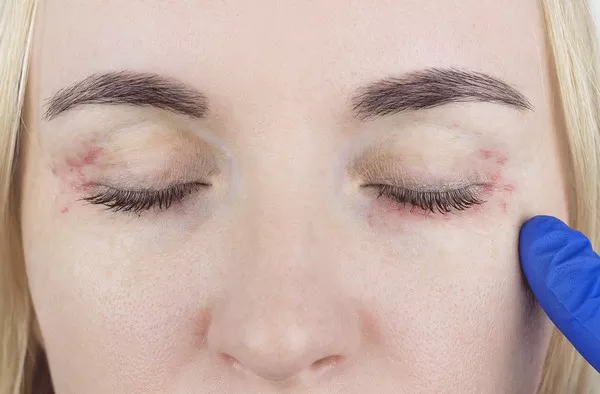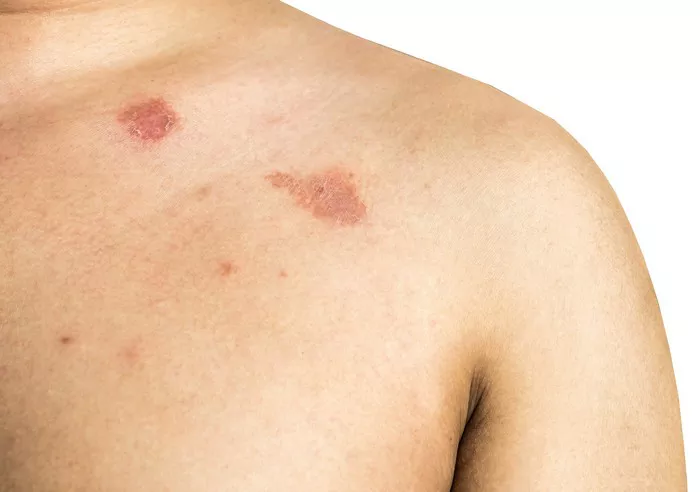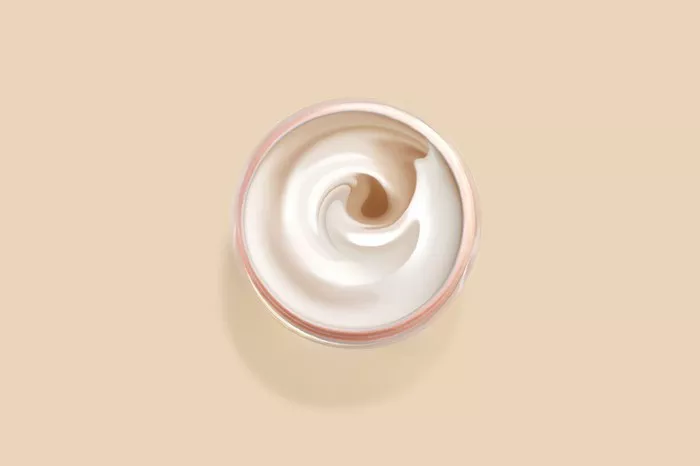Ringworm is a common fungal infection that affects the skin, hair, and nails. Despite its name, it is not caused by a worm but by fungi known as dermatophytes. These fungi thrive in warm, moist environments and can infect the skin, leading to a red, circular, itchy rash. Understanding how ringworm develops is crucial for preventing and treating this condition. In this article, we will explore the causes, risk factors, and stages of development of ringworm, as well as how it spreads.
What is Ringworm?
Ringworm, also known as tinea, is a fungal infection that typically affects the outer layer of the skin. The name “ringworm” comes from the characteristic ring-shaped rash that often forms on the skin. However, the infection is not caused by worms, but rather by fungi that live on the skin, hair, and nails. These fungi are called dermatophytes, and they can cause different types of ringworm depending on the area of the body that is infected.
Causes of Ringworm
Ringworm is caused by fungi that thrive on the skin’s outer layer. The fungi that lead to ringworm are dermatophytes, which are microscopic organisms that feed on keratin, a protein found in the skin, hair, and nails. The fungi can infect various parts of the body, including the scalp (tinea capitis), feet (tinea pedis), groin (tinea cruris), and body (tinea corporis).
The most common dermatophytes responsible for ringworm are Trichophyton, Microsporum, and Epidermophyton. These fungi can be spread through direct contact with an infected person, animal, or contaminated objects like towels, combs, and clothing.
Risk Factors for Developing Ringworm
Several factors can increase the risk of developing ringworm. These factors make it easier for the fungi to thrive and infect the skin.
Direct Contact with Infected Individuals or Animals: Ringworm is highly contagious. If you touch someone who has an active infection, the fungi can spread to your skin. Animals, particularly pets like cats and dogs, can also carry the fungi and transmit it to humans.
Poor Hygiene: Not keeping your skin clean and dry creates an environment where fungi can thrive. Excess moisture, especially in areas like the feet or groin, encourages fungal growth.
Warm and Humid Environments: Fungi thrive in warm, moist areas. This is why ringworm is common in places like locker rooms, public showers, and swimming pools. Hot weather and sweating also increase the chances of developing the infection.
Compromised Immune System: People with weakened immune systems, such as those with HIV/AIDS, diabetes, or cancer, are more susceptible to fungal infections, including ringworm.
Skin Injuries: Any injury to the skin, such as cuts or abrasions, can create an opening for fungi to enter and cause an infection.
Close Contact Sports: Athletes who participate in sports like wrestling are at a higher risk of developing ringworm because of the physical contact with others, which increases the chances of transmission.
Sharing Personal Items: Sharing items like towels, combs, or clothing with someone who has ringworm can lead to the spread of the fungi.
How Ringworm Develops on the Skin
Ringworm develops when the fungi come into contact with the skin. The infection begins to spread as the fungi break down the keratin in the skin, hair, and nails. Once the fungi start growing, the body’s immune system reacts, which leads to the formation of symptoms like redness, itching, and a characteristic ring-shaped rash.
The development of ringworm follows these stages:
1. Fungal Exposure
The process starts when you come into contact with dermatophytes. This can happen through direct contact with an infected person, animal, or contaminated object. The fungi can survive on surfaces for extended periods, especially in damp and humid environments. Once the fungi touch your skin, they begin to infect the outer layer.
2. Infection of the Skin
Dermatophytes prefer to live in the dead cells of the skin’s outer layer, where they can break down keratin for nourishment. The fungi begin to grow and spread in these skin layers. If the environment is favorable, such as being warm and moist, the fungi can quickly multiply.
3. Immune Response
As the fungi invade the skin, your immune system detects the presence of the infection. The body responds by releasing inflammatory chemicals to fight the fungi. This immune reaction causes the skin to become inflamed, red, and itchy. The body’s defense mechanism works to isolate the infection and stop it from spreading further into the deeper layers of the skin.
4. Formation of the Ring-shaped Rash
As the fungi continue to spread, they create a distinctive ring-shaped rash. The center of the rash may heal, while the edges become red and inflamed. The ring usually has a raised border, which is characteristic of ringworm. The edges of the rash often look scaly, and the skin may peel or crack.
5. Growth and Spread
If the infection is not treated, it can continue to grow, and new rings may form. The fungi can spread to other parts of the body through direct contact or by touching contaminated surfaces. The condition may worsen if the skin is scratched, as this can cause the fungi to spread to other areas of the body.
Types of Ringworm
There are different types of ringworm, depending on the part of the body affected. Each type of ringworm develops in a similar way but has specific symptoms.
Tinea Corporis (Body): This type of ringworm affects the skin on the body, usually forming circular, red, scaly patches. It can spread to other areas if not treated.
Tinea Pedis (Athlete’s Foot): Tinea pedis primarily affects the feet, especially the spaces between the toes. It can cause itching, redness, and peeling skin. The infection may spread to the toenails or the groin area if left untreated.
Tinea Cruris (Jock Itch): This type affects the groin area, often causing itching, redness, and irritation in the folds of the skin.
Tinea Capitis (Scalp Ringworm): Tinea capitis affects the scalp and hair. It causes hair loss, itching, and scaling. This type is more common in children.
Tinea Unguium (Nail Fungus): Tinea unguium affects the nails, causing them to become thick, discolored, and brittle.
How Ringworm Spreads
Ringworm spreads through both direct and indirect contact. The infection can spread when you touch someone with an active infection or share personal items such as towels, brushes, and clothing. It can also spread by touching surfaces like gym equipment, floors, or public showers that have been contaminated with the fungi.
Animals, especially cats and dogs, can carry the fungi and transmit it to humans. Petting or handling an infected animal can lead to the fungi being transferred to your skin.
Prevention of Ringworm
Preventing ringworm is possible by following simple hygiene practices. Here are some steps to reduce the risk of developing ringworm:
Maintain Good Hygiene: Wash your skin regularly with soap and water. After sweating, shower as soon as possible to remove any moisture from the skin.
Keep Skin Dry: Fungi thrive in moist environments. Dry off thoroughly after bathing or swimming, especially in areas like the feet, groin, and armpits.
Avoid Sharing Personal Items: Do not share towels, combs, clothing, or other personal items with others.
Wear Protective Footwear: In public places like gyms, pools, and locker rooms, wear sandals or waterproof footwear to prevent exposure to fungi.
Treat Infected Pets: If your pet has ringworm, seek veterinary care and avoid close contact with them until the infection is treated.
Disinfect Shared Surfaces: Clean and disinfect items and surfaces that may come into contact with the skin, such as gym equipment, doorknobs, and countertops.
Treatment for Ringworm
Ringworm is usually treated with antifungal medications. These medications can be applied topically as creams, ointments, or sprays. For more severe cases or when the infection affects the scalp or nails, oral antifungal medications may be required.
It is important to complete the full course of treatment to ensure the infection is fully eradicated, even if the symptoms seem to disappear. If left untreated, ringworm can spread or reoccur.
Conclusion
Ringworm is a fungal infection that develops when dermatophytes infect the outer layer of the skin, hair, or nails. It spreads through direct contact with infected people, animals, or contaminated surfaces. By maintaining good hygiene, keeping the skin dry, and avoiding contact with infected individuals, you can reduce your risk of developing ringworm. If you do get ringworm, early treatment with antifungal medications can help control and eliminate the infection, preventing it from spreading or becoming more severe.
Related topics:


























